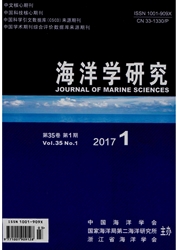

 中文摘要:
中文摘要:
水下考古已成为考古领域的重要组成部分。在中国沿海,尤其在古海上丝绸之路沿线,留存了大量前人活动的遗迹。水下考古需要使用高新探测设备,并配合合理的操作流程。本文以广东川岛水下考古为例,由多波束测深系统、浅地层剖面仪、侧扫声呐系统和磁力仪等新型高精度海洋物探设备构成水下考古系统,建立了水下考古的基本流程。川岛是古海上丝绸之路的重要泊靠点,在此次川山群岛海域考古调查中,根据多波束大规模覆盖和侧扫声呐拖曳式作业,在泥湾水道、打铁湾以及乌猪洲等处有新的发现,包括清代瓷器碎片和古代铁炮等。川岛水下考古文物的发现,对于进一步沿古海上丝绸之路的文物调查具有重要促进作用,也使水下考古得到更多关注。
 英文摘要:
英文摘要:
Underwater archeology is a new research field in China.In China's coastal waters,there exist a large number of sunken ships along the ancient"Maritime Silk Road".Recently,underwater archeology has become an active research for the coastal provinces.As such,it is necessary to establish an appropriate survey procedure,using high precision marine geophysical prospecting equipments,e.g.,the multibeam sounding system,shallow seismic profiler,side scan sonar,magnetometer,and even ROV systems.In the present contribution,we report the basic procedures adopted for underwater archeological survey over the Chuan Island sea area,Guangdong Province,together with a preliminary description of some new archeological findings.Chuan Island is an important mooring place associated with the ancient "Maritime Silk Road".Using the multibeam bathymetry system and the side scan sonar,some relict pieces of ancient porcelain in Qing Dynasty,as well as some iron cannons,have been found in the coastal waters of Mud Bay,Datie Bay and Wuzhuzhou Island.The discovery of underwater cultural relic in Chuan Island can promote the activity on the cultural relic investigation along the ancient"Maritime Silk Road",and the underwater archeology can also gained more attention.
 同期刊论文项目
同期刊论文项目
 同项目期刊论文
同项目期刊论文
 期刊信息
期刊信息
